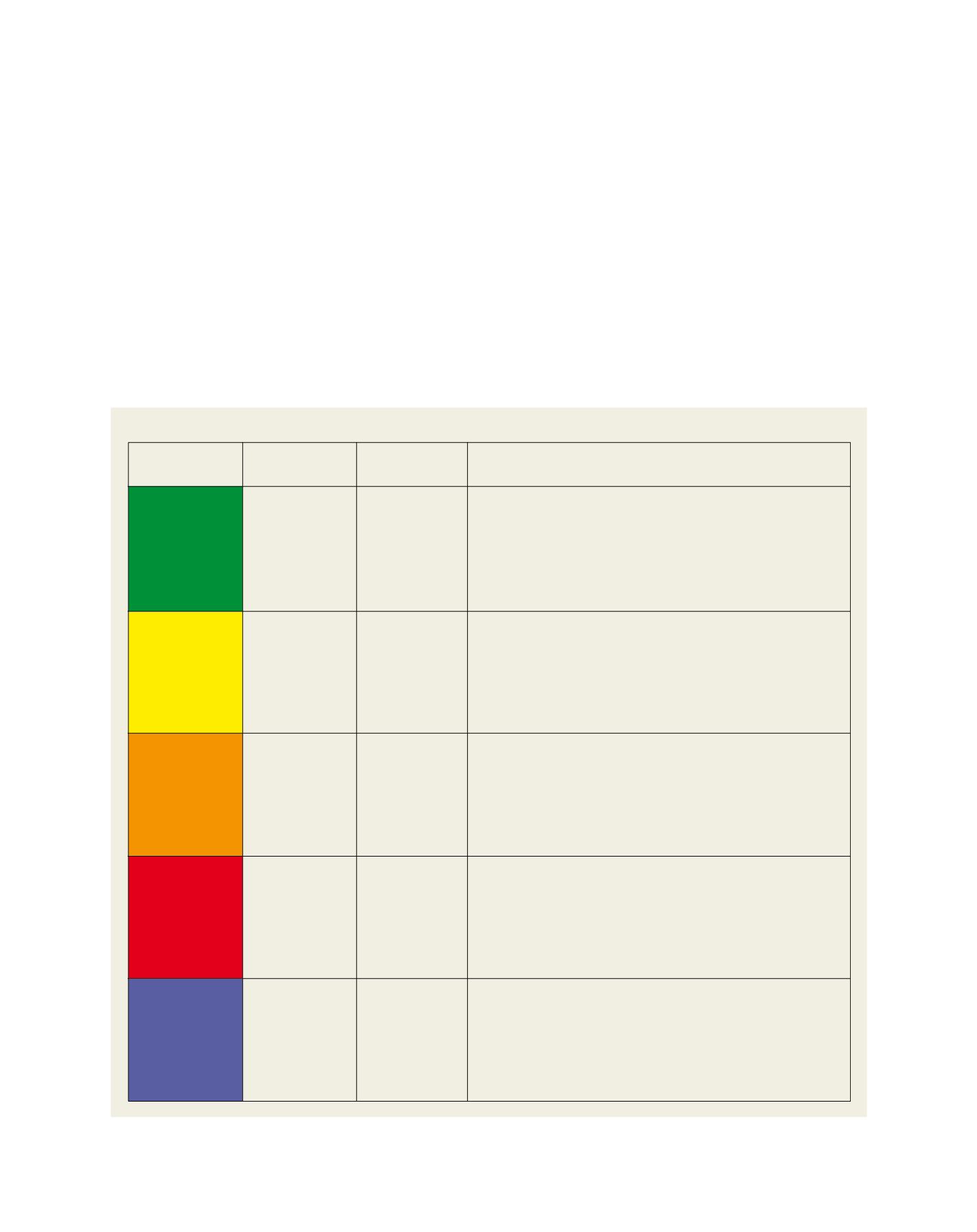

[
] 114
H
ealth
place affected by the spring ozone depletion associated
with the ozone hole. Annual and daily cycles of UVI
were characterized at different locations in Chile, using
data collected for the corresponding stations. Five years
of almost continuous monitoring in most of the stations
has allowed the analysis of UV-B behaviour and how
it is influenced by factors such as elevation, latitude,
surface reflectivity and cloud cover and type.
The monthly average UVI behaviour in Chilean
territory shows an annual cycle with a maximum in
January and a minimum in June, as well as the south-
ward decrease with higher values in the northern part,
reflecting the astronomical and latitudinal factors. The
daily seasonal average cycle reveals that the maximum
The worldwide increase in skin cancer, people exposing
themselves to direct solar radiation, the global depletion of the strat-
ospheric ozone, and the fact the Chilean territory can directly be
affected by the ozone hole were all motivations for DMC to imple-
ment the URN for measuring UV-B. The objective of this initiative
was to create through time a database that would permit the study
of the impact of ozone depletion in Chile. Thus, the data analysis
would be used to improve our knowledge of spatial and temporal
distribution. At the same time, all this new information would help
to develop prevention programmes to overcome the adverse effects
of the eventual UV-B increase. The first station was installed in the
capital city of Santiago (~ 33°S, 70°W, 520 masl) in 1992, where
almost half the nation’s population is located. A second station was
deployed in the Antarctic Chilean Base Eduardo Frei Montalva, a
Source: DMC
UVI descriptions and associated recommendations
Wear sunglasses on bright days; use sunscreen if there is
snow on the ground, which reflects UV radiation, or if you
have particularly fair skin.
Wear sunglasses on bright days; use sunscreen if there is
snow on the Wear sunglasses and use sunscreen, cover
the body with clothing and a hat, and seek shade around
midday when the sun is most intense., which reflects UV
radiation, or if you have particularly fair skin.
Wear sunglasses and use sunscreen having SPF 15 or
higher, cover the body with sun protective clothing and a
wide-brim hat, and reduce time in the sun from two hours
before to three hours after solar noon (roughly 11:00 to
16:00 LT during summer).
Wear sunscreen, a shirt, sunglasses, and a hat. Do not
stay out in the sun for too long.
Take all precautions, including: wear sunglasses and use
sunscreen, cover the body with a long-sleeve shirt and
trousers, wear a very broad hat, and avoid the sun from
two hours before to three hours after solar noon.
No danger to the
average person
Little risk of harm
from unprotected
sun exposure
High risk of harm
from unprotected
sun exposure
Very high risk of
harm from
unprotected sun
exposure
Extreme risk of
harm from
unprotected sun
exposure
Green
Yellow
Orange
Red
Violet
0-2
Low
UVI
Description
Media Graphic
Colour
Recommended Protection
3-5
Moderate
6-7
High
8-10
Very high
11+
Extreme
















